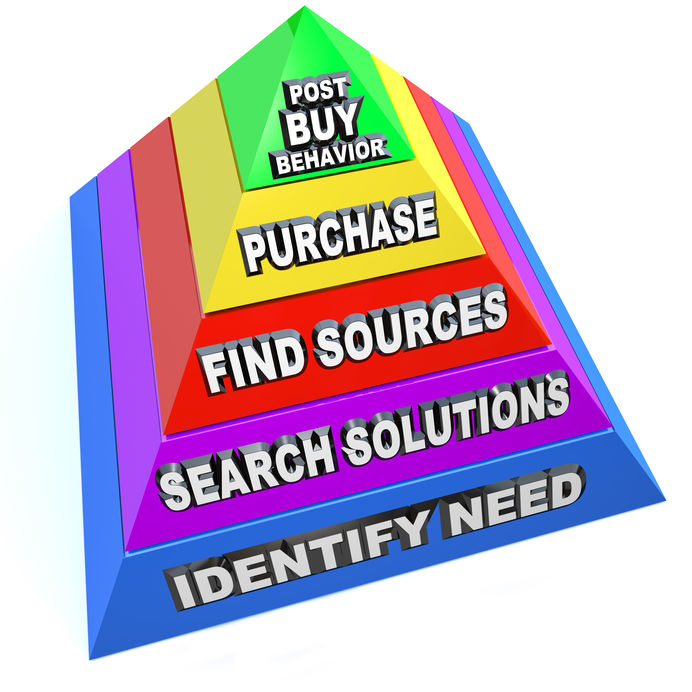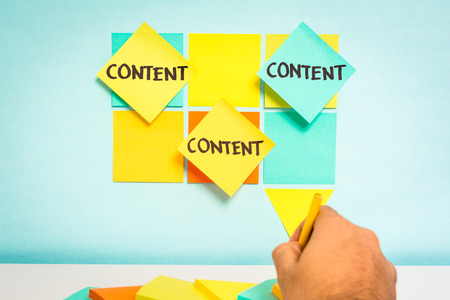
It’s no question that we see the value in content to establish thought leadership. In fact, 72 percent of marketers agree content marketing increases engagement. In previous blogs, we’ve shared insights into how to develop high-quality content, which mediums to prioritize for your organizational goals and how to build a strong content strategy. But do you know how well your content is helping customers make buying decisions?
Even though 89 percent of customers report encountering high-quality information during the purchase process, many claim the amount of content causes them to go on “information overload.” Gartner Research recently released a study that showed why and how customers struggle with buying decisions. “It’s not customers’ confidence in suppliers that is in critically short supply, but customers’ confidence in themselves and their ability to make good buying decisions,” says Brent Adamson, vice president at Gartner. In order to combat this, Gartner recommends their method of “buyer enablement.” In this blog we’ll break down their steps of buyer enablement and show how marketing content can support the process.
What is Buyer Enablement?
In the same way that sales enablement helps sellers sell, buyer enablement helps buyers buy. Gartner defines buyer enablement as “the provisioning of information that supports the completion of critical activities necessary to make a purchase…by providing them with prescriptive advice and practical support to make the buying process easier to navigate and complete.” According to Gartner, there are six steps to buyer enablement:
- Problem identification. What problem does the buyer need to solve? At this stage, buyers may conduct online research, download white papers, review reports and more.
- Solution exploration. What known solutions exist for the buyer’s problem? Buyers will turn to discussions with peers and suppliers, read customer reviews and testimonials and consume marketing content.
- Requirements building. What steps are necessary to effectively solve the problem? This may include requests for proposals, engaging with sales representatives and viewing demonstrations.
- Supplier selection. How does one supplier’s solution compare to another? After completing a shortlist of potential partners, buyers will review options carefully.
- Validation. How can the buyer be sure an option will work? During this stage, buyers investigate supplier claims by searching for third-party validation in the form of end-user feedback, references, etc.
- Consensus creation. Are all decision-makers on board? This is where buyers educate stakeholders about what they have learned, answer any questions and ultimately agree upon a solution.
Marketing Methods that Enable Buyers

Marketing content can be one of the most effective tools for buyer enablement. Here’s how some of the most popular forms support buyer enablement and ensure success for engagement and lead generation.
- Blogs are among the most flexible, yet informative, types of content in your marketing arsenal. Published on your own website, it is easy for potential buyers to locate relevant information and associate it with your company’s offerings. Remember to use calls-to-action on each blog to guide buyers through an informed sales funnel.
- Bylined articles that appear in respected publications have a unique ability to deliver your company’s message to a highly targeted audience. By nature, they are a trusted source of information and can automatically validate your firm as dependable and reliable. The in-depth nature of bylined articles can help define and solve problems for buyers. It also “enables” them to make positive, well-founded buying decisions.
- Testimonials and case studies are great validation tools that allow buyers to speak for themselves or provide real-world examples. According to Nielsen research, “92 percent of people will trust a recommendation from a peer, and 70 percent of people will trust a recommendation from people they don’t even know.” Testimonials put your clients in the spotlight to discuss your company in their own words. More in-depth case studies break down your solutions step-by-step and show results in detail. Each helps prospective buyers understand how your company provides solutions, the level of service and the kind of tools and industries.
- AI, chatbots and machine-learning are quickly making their way into many B2B marketing and sales toolkits and support the buyer-enablement process. In fact, 73 percent of marketing executives see AI or a technology-dependent on AI as critical to the future of marketing. AI, designed to think like humans, can give companies an edge when it comes to enabling buyers with the information they need to make purchase decisions. For example, chatbots are able to answer frequently asked questions and initiate the buying process 24/7. This opens up new opportunities for buyers to reach the sales department before connecting directly with your sales team. AI and machine learning can provide meaningful suggested content via algorithms and organize data in relevant ways. AI also assists sales teams in reaching out to the most viable prospects.
Mindset Shift

Sales enablement and buyer enablement go hand in hand. At the same time, they need to be treated with separate and equal dedication. Throwing content into the wind and hoping it will catch is not a strategy. A variety of tactics, distribution schedules and evaluation processes is essential. Similarly, a customer-first way of thinking is also necessary. Rather than developing content simply for the sake of content development, keep buyer enablement top of mind. This mentality allows for the most effective kind of messaging development that prioritizes content for meaningful and relevant engagement between your sales teams and prospective buyers.
